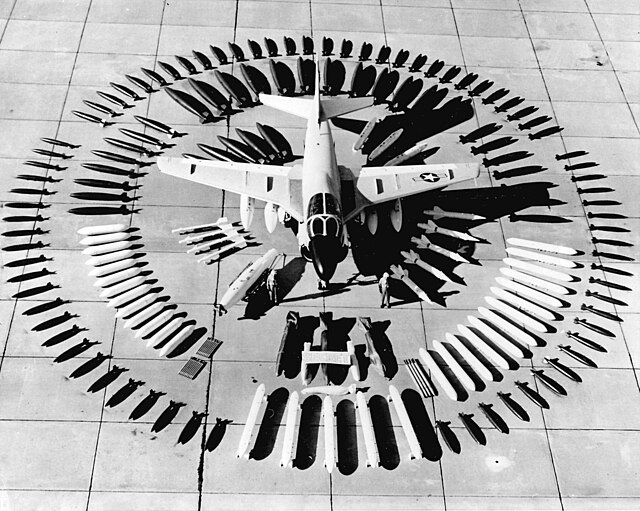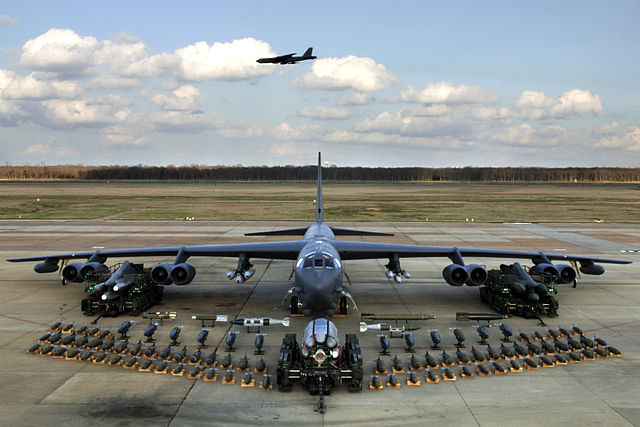Top Qs
Timeline
Chat
Perspective
Aircraft ordnance
Weapons used by aircraft From Wikipedia, the free encyclopedia
Remove ads
Aircraft ordnance or ordnance (in the context of military aviation) is any expendable weaponry (e.g. bombs, missiles, rockets and gun ammunition) used by military aircraft. The term is often used when describing the payload of air-to-ground weaponry that can be carried by the aircraft or the weight that has been dropped in combat.[citation needed] Aircraft ordnance also includes air-to-air, anti-ship and anti-submarine weapons.



Some aircraft types can carry a wide variety of ordnance – for example, the Fairchild AU-23 Peacemaker could use forward-firing gun pods, 500 and 250 pound bombs, napalm units, cluster bomb units, flares, rockets, smoke grenades and propaganda leaflet dispensers.[1]
Ordnance can be carried in a bomb bay or hung from a hardpoint.
For many weapons there is a limit to the length of time they can be flown (e.g. because of vibration damage); after this their safety or effectiveness is not guaranteed. This can be a problem if weapons designed for high intensity conflict are carried on multiple missions in a long counter-insurgency campaign.[2]
Remove ads
History
This section needs expansion. You can help by adding to it. (November 2024) |
Guidance


Ordnance can be divided into guided and unguided categories based on their targeting capabilities. Guided ordnance, such as Precision-guided munitions (PGMs), use advanced technologies like GPS, infared, radar or laser tracking to precisely hit designated targets.[3][4][5] Unguided ordnance, commonly known as "dumb bombs," lack guidance systems and rely on the aircraft’s release parameters to strike a target. Though less accurate, unguided bombs are often used for area strikes and are more cost-effective. [5]
Remove ads
Air-to-Ground vs. Air-to-Air Ordnance
This section needs expansion. You can help by adding to it. (November 2024) |
See also
References
Wikiwand - on
Seamless Wikipedia browsing. On steroids.
Remove ads
